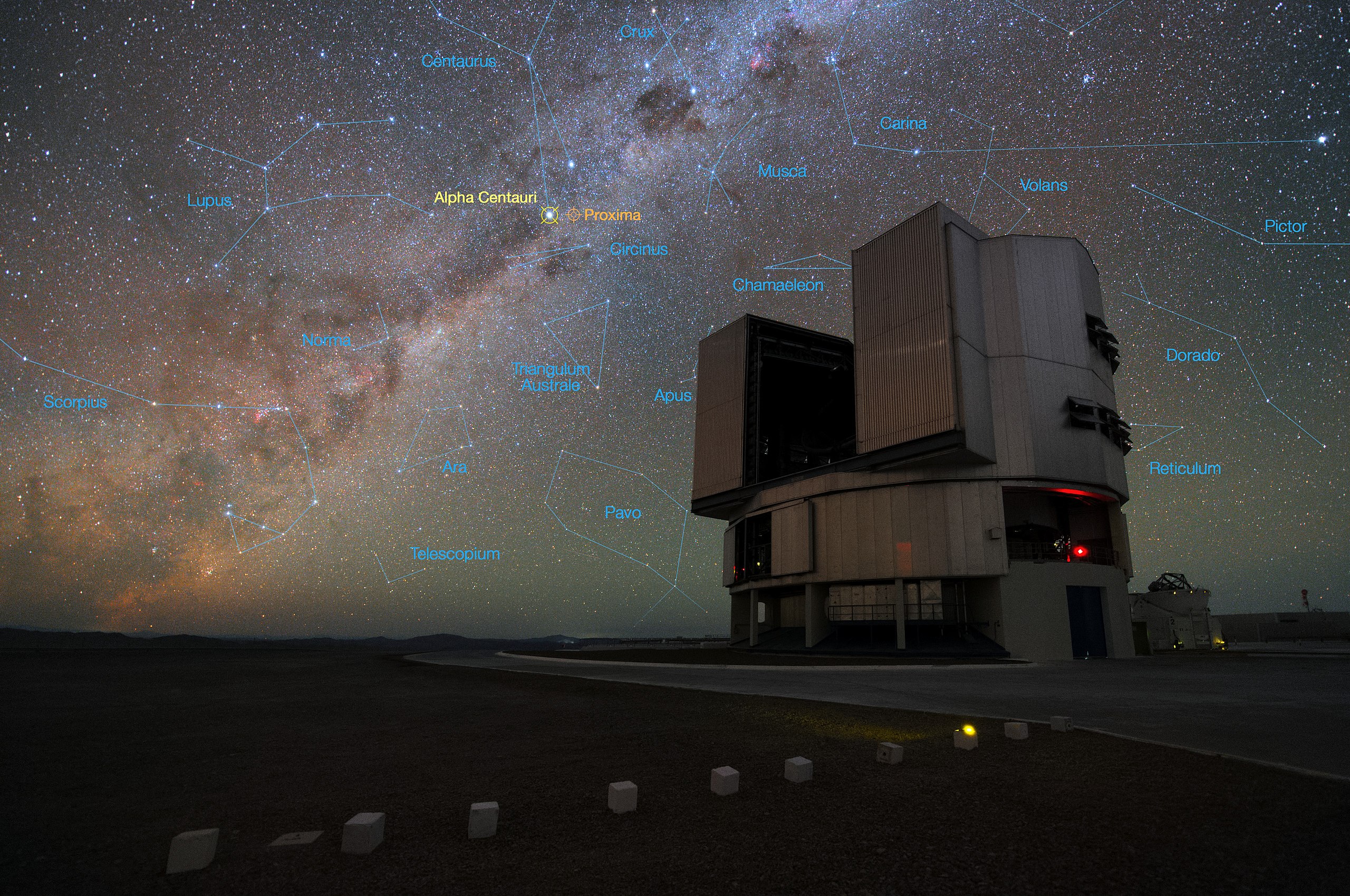The Very Large Telescope
 The Very Large Telescope (VLT) is actually four separate telescopes, each with a
8.4-m mirror. The telescopes are located in the Atacama Desert in northern
Chile, South America. The Atacama Desert is one of the driest places in
the world, and as such is home to many astronomical observatories, visual and
radio alike.
The observatory is located on a mountain peak, 2600 m above sea level.
Due to its position on top of a high mountain range, just close to the pacific
coast, almost every night is clear at this place. The humidity is low allowing
observations in almost all wavelength ranges, except those that are only
accessible from space. Thanks to the excellent infrastructure in Chile, going
there is nowadays only a matter of one or two days, which allows astronomers to
travel from the UK to the observatory and observe their targets. In fact, the
ESO Paranal Observatory (which host the VLT telescopes ,see picture) is one of
the largest observatories in the world with about one hundred technicians and
scientists being on site every day.
The Very Large Telescope (VLT) is actually four separate telescopes, each with a
8.4-m mirror. The telescopes are located in the Atacama Desert in northern
Chile, South America. The Atacama Desert is one of the driest places in
the world, and as such is home to many astronomical observatories, visual and
radio alike.
The observatory is located on a mountain peak, 2600 m above sea level.
Due to its position on top of a high mountain range, just close to the pacific
coast, almost every night is clear at this place. The humidity is low allowing
observations in almost all wavelength ranges, except those that are only
accessible from space. Thanks to the excellent infrastructure in Chile, going
there is nowadays only a matter of one or two days, which allows astronomers to
travel from the UK to the observatory and observe their targets. In fact, the
ESO Paranal Observatory (which host the VLT telescopes ,see picture) is one of
the largest observatories in the world with about one hundred technicians and
scientists being on site every day.
Someone get me my sunnies, I'm in!
Hmmm...let me see the other options